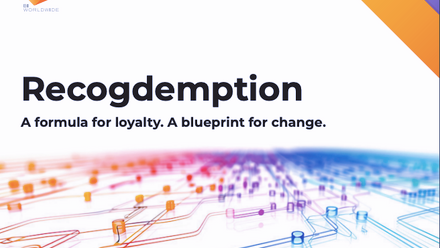What is online Pay Equity Analytics and what are the business benefits?
With more than eight years of mandatory gender pay gap reporting in the UK, many organisations have relied on manual processes or outsourced consultants to comply with regulations.
However, with the growing complexity of pay equity reporting - particularly with the anticipated inclusion of ethnicity and disability pay gaps - organisations must adopt smarter, more scalable tools.
Here are 10 reasons why an online pay equity analytics solution is the way forward:
1. Simplified compliance with evolving regulations
The reporting requirements for pay gaps are expanding, covering not just gender but also ethnicity and disability gaps.
An online solution helps ensure compliance by automating calculations for all required metrics, adapting seamlessly to new regulatory demands.
If something changes with your organisation, you can easily upload new workforce data to see how this impacts your goals and objectives.
There are even solutions that notify you when a regulation that applies to your organisation changes or is going to change so that you can stay prepared.
For context, the British Chamber of Commerce estimates that the average cost of an employment tribunal claim is approximately £8,500, plus counsel fees - underscoring the importance of proactive compliance measures.
2. Enhanced accuracy
Manual spreadsheets are prone to errors that can result in inaccurate reporting.
An analytics solution ensures precise calculations, minimising compliance risks and preserving your organisation’s reputation.
For example, if you already have DEI data and want a clearer view of inequality across key demographics, the customisable filters available on a pay equity analytics solution enable you to stay on top of pay issues within specific groups and avoid penalties of missed deadlines.
3. Cost-effectiveness
Outsourcing to consultants may suffice for annual reporting, but it’s expensive and unsustainable for year-round pay equity monitoring.
By switching to an online tool, organisations save on consultant fees while empowering in-house teams with powerful analytics.
4. Continuous, trusted insights from your pay data
Instead of static, once-a-year or quarterly reporting, an online solution provides real-time dashboards to track pay equity progress throughout the year.
This proactive approach allows organisations to address issues before they escalate.
5. Advanced insights and root cause analysis
Most manual reports focus only on the numbers, but an online solution delves deeper, identifying root causes of pay disparities and offering actionable recommendations for closing gaps.
6. Scalability
As organisations grow or encounter increasingly complex reporting needs, online analytics platforms offer the flexibility to handle larger datasets and multiple dimensions of pay equity reporting.
Whether an organisation expands into a new locale or the workforce shifts with new hires, promotion, or attritions, online pay equity solutions can help you stay ahead.
Forty-seven percent of companies with major operations in Europe are extremely or moderately concerned about the impact of the EU Pay Transparency Directive on their organisations. (source: 2025 Workplace Equity Trends Report, Syndio)
7. Employee trust and engagement
Using advanced tools demonstrates a genuine commitment to fairness and transparency.
This can boost employee morale, improve retention, and enhance your employer brand.
Nearly 70% of employees would take one job offer over another based on the organisation’s transparency practices, according to Gartner research.
8. Time-saving
Manual calculations and coordination with consultants take weeks.
An online solution automates these processes, reducing the time required to generate accurate reports from weeks to hours.
9. Stay competitive
With an online pay equity solution, you can ensure you pay your employees fairly and equally no matter their demographic and make informed decisions based on your people data, ensuring you’re offering the best overall package to attract the best talent in your industry.
About 35% of organisations reported that candidates are increasingly looking for what is considered a fair wage.
Just 4% of organisations did not see any impact on salary expectations. (Cendex Recruitment, retention, and culture: assessing the pandemic’s impact 2021 Research)
10. Key differentiator
Organisations that prioritise pay equity and transparency not only meet ESG (environmental, social and governance) expectations but also gain a competitive edge in talent acquisition and retention.
A Visier report reveals that 79% of employees desire some form of pay transparency, with 32% advocating for total transparency.
Furthermore, SHRM’s research indicates that pay transparency can decrease employees' intent to quit by 30%.
By leveraging pay transparency as a market differentiator, companies can attract top talent, enhance employee trust, and demonstrate a commitment to social responsibility - key factors that contribute to a competitive advantage in today's talent-driven market.
What is online Pay Equity Analytics?
Brightmine Pay Equity Analytics is an online cloud software as a service that provides intuitive insights into pay and wage inequity, achieving equal pay and embracing diverse talent ecosystems.
This software solution enables streamlined pay transparency on gender pay gap, ethnicity and disability pay gap analysis and empowering change through workplaces.
Brightmine Pay Equity Analytics ensures all work is fair by helping employers understand and resolve issues with equal pay, wage gaps, workforce inequalities, pay disparities and more.
With Brightmine Pay Equity Analytics, employers become experts in closing wage gaps and achieving fair pay. We take the complexity out of pay equity.
For details, visit Gov.uk Digital marketplace or Brightmine website.
Download Brightmine's comprehensive guide to learn more about the tangible ROI of Pay Equity Analytics and its real-world impact across UK organistions.
Supplied by REBA Associate Member, Brightmine (FKA XpertHR)
Brightmine is a leading, global provider of people data, analytics and insight.








